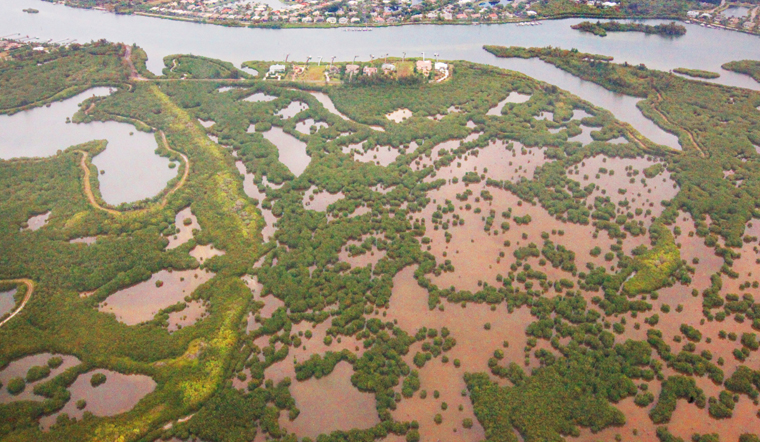
Over the past year or so, city councils, county commissions and state legislators have coalesced solidly around the realization that the Indian River Lagoon is of supreme importance to this part of Florida and that it is in serious trouble which will take concerted and in some cases costly government action to remedy.
Fertilizer control ordinances have been passed in dozens of cities and in all five counties that border the lagoon, and Senators Thad Altman and Joe Negron, among others, have secured tens of millions in state funding for lagoon research and repair projects.
Now the Federal government is joining the effort to save the lagoon and other impaired waters.
Last week the House of Representatives approved S1254, the Harmful Algal Bloom and Hypoxia Research Amendments Act of 2014, the house version of a Senate Bill sponsored by Bill Nelson intended to provide $82 million over four years for tightly targeted research into the cause of and remedy for harmful algal blooms like the ones that have devastated the lagoon over the past three years.
Rep. Bill Posey of the 8th District, which runs along the lagoon from Vero Beach to Cape Canaveral, said on the house floor, “In my congressional district, the Indian River Lagoon has experienced algal blooms each year from 2011 to 2013, leading to the loss of nearly half the seagrass beds – the primary means of measuring the health of the lagoon. Prior to 2011, seagrass beds in the lagoon had been on a steady increase for nearly 15 years. The devastating economic and ecological impacts of these blooms can be felt across the length of the 156-mile lagoon.”
Posey, a Republican, and Oregon Democrat Rep. Suzanne Bonamici shepherded the bill through the house and amended it to make sure the federal money does not fund duplicate projects.
“The amended bill requires NOAA (National Oceanographic and Atmospheric Administration) to do greater due diligence before approving grants to make sure that we don’t end up with scientists in Maryland and Florida doing the same research,” said Posey’s press Secretary George Cecala. “It forces universities and other institutions to work together more closely to avoid duplicating efforts.”
The algal bloom research legislation is already in effect but, since 2010, it has been funded one year at a time, requiring annual reauthorization. The amended bill puts $20.5 million in funding in place for four years, ensuring a steady supply of grant money if passed.
“We have worked with the senate committee while making these changes,” Cecala said. “They are aware of the amendments and we anticipate the bill will be approved when it comes up [for final passage in the Senate].”
“This is great news,” says Frank Kinney, Florida Institute of Technology vice president for research, of the four-year funding. “It opens up another opportunity for us to get money for important research critical for the health of the lagoon. We will absolutely be applying for some of the grant money.”
FIT established the Indian River Lagoon Research Institute last fall to conduct a wide range of studies and propose solutions to problems in the lagoon that include sewage and fertilizer pollution, toxic muck and smothering algal blooms; 23 faculty members are active in the institute and algal bloom research funded by St. Johns River Water Management District is already underway.
“It is wonderful to see bipartisan cooperation on a bill like this, and I think the requirement for greater oversight to avoid duplicate efforts is a smart step in the right direction,” Kinney said. “Resources are scarce in Tallahassee and Washington and it is important to work closely with other institutions and connect all the dots.”
“This bipartisan, bicameral legislation will reauthorize robust funding for important research leading us to a better understanding of the causes, effects and steps we can take to prevent and address harmful algal blooms,” said Posey.



